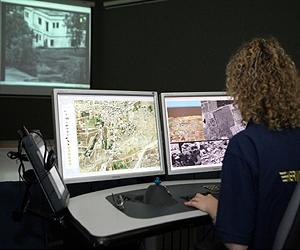It's not often I read about a new project that leaves me undecided whether it's totally crazy or a stroke of genius.
I was recently sent a press release of such a project and, having read it over a few times, I think I'm leaning toward the latter.
The idea is the brain child of British amateur astronomer Nick Howes who not only has a passion for hunting for asteroids, but also for the Space Race -- in particular,
the Apollo era.
It's perhaps fitting then that Howes' new project combines his two passions and will challenge him and a host of other very prestigious organizations more than they have ever been challenged before.
The Apollo 11 mission that landed Neil Armstrong and Buzz Aldrin on the surface of the moon rather overshadowed the phenomenal achievement of the previous mission, Apollo 10. Without the bravery of Thomas Stafford, John Young and Gene Cernan, the moon first landing would never have happened.
Not only did this historic mission do everything Apollo 11 did (except actually land on the moon), it also set records for the fastest human beings have ever flown and the furthest mankind has ever been from Earth.
As part of the mission, Apollo 10's lunar module ascent stage -- affectionately called 'Snoopy' -- was discarded and sent into an orbit around the sun. 42 years later and it's still believed to be out there.
In a celestial version of finding a needle in a haystack, Howes and his team are about to embark on the seemingly impossible: finding Snoopy!
After consulting members of NASAs Jet Propulsion Laboratory, the Faulkes Telescope team, who are working with the Space Exploration Engineering Corp and astronomers from the Remanzacco Observatory in Italy as well as schools across the UK, the team are under no illusion of how difficult the task will be as Paul Roche, Director of the Faulkes Telescope Project states: "To paraphrase President Kennedy, we are trying these things 'not because they are easy but because they are hard' -- this will be a real test for the hardware and the people involved."
The challenges facing the team are enormous, a fact that isn't lost on Howes. "The key problem which we are taking on is a lack of solid orbital data since 1969," he told Discovery News. "We've enlisted the help of the Space Exploration Engineering Corp who have calculated orbits for Apollo 13 and working closely with people who were on the Apollo mission team in the era will help us identify search coordinates."
"We're expecting a search arc up to 135 million kilometers in size which is a huge amount of space to look at," Howes continues. "We're aware of the scale and magnitude of this challenge but to have the twin Faulkes scopes assist the hunt, along with schools, plus the fact that we'll doubtless turn up many new finds such as comets and asteroids makes this a great science project too."
If the team find a potential suspect, they will turn to detailed spectral analysis to see if the hidden messages in the reflected light can confirm if they have succeeded in finding Snoopy.
The chances of the team finding the lost lunar module are small, and the challenges daunting, but let's not forget that some of the greatest discoveries in scientific history have come from moments like this, when a team of enthusiastic and dedicated people come together to take on the seemingly impossible.
After all, surely that was the very essence and spirit of the Apollo missions over 40 years ago.

 NRO's ability to fuse various streams of intelligence data - including image, signals and geolocation - into a single, usable result has increased by an order of magnitude, but is five orders of magnitude below where it needs to be.
NRO's ability to fuse various streams of intelligence data - including image, signals and geolocation - into a single, usable result has increased by an order of magnitude, but is five orders of magnitude below where it needs to be.